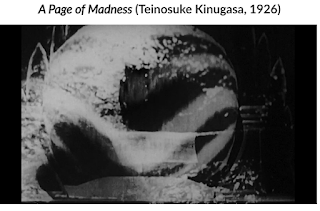Experimental Narrative
By the late 1920s, filmmakers in several countries were using the techniques and styles of the independent experimental cinema to question narrative conventions. In the United States, some experimental directors adapted techniques from German Expressionism and French Impressionism into cinematic forms suited to low-budget, independent production. During the late 1920s, noncommercial European filmmakers pushed both narrative and abstract techniques still further.
In the United States, some filmmakers outside the commercial industry wanted to treat film as a modern art. Few of the more radical experimental films made in Europe during this era were shown in America, however. Experimental filmmakers were inspired mainly by German Expressionist and French Impressionist films.
Like Dreyer, Robert Florey was an international director, though on a more modest scale. Born in France, he was thoroughly familiar with both the Impressionist and the Expressionist movements. He came to Hollywood in 1921, serving as United Artists’ technical adviser on French subjects and eventually directing minor features. In 1927, he turned to experimental filmmaking, directing the short The Life and Death of 9413—a Hollywood Extra (aka Life and Death of a Hollywood Extra). This ingenious film, made for a reported $100, combined close shots of actors against black backgrounds with stylized miniature scenes, made of simple paper cut-outs and erector-set objects, shot with an ordinary light on a kitchen table. The film was a witty satire on Hollywood’s uncaring treatment of aspiring talent. Florey’s cinematographer, Gregg Toland, went on to photograph many major films, including Citizen Kane. In the following clip, a split-screen effect in The Life and Death of 9413—a Hollywood Extra juxtaposes the hero’s naive face with his abstract vision of Hollywood.
The Life and Death of 9413—a Hollywood Extra (Robert Florey, 1927)
pictures again of his smiling face
his smiling face - a sign that says 9413 - END
In Rochester, New York, two film and photography enthusiasts, James Sibley Watson and Melville Webber, codirected The Fall of the House of Usher (1928). This film’s oblique narrative technique depends on the spectator’s foreknowledge of Poe’s story. Impressionist-style subjective camera techniques and Expressionist decor are combined in an attempt to capture the eerie atmosphere of the original.
The Fall of the House of Usher (James Sibley Watson & Melville Webber, 1928)
Several variations on these faces
clever - man grabbing at camera
a better - repeating shot
Clever shot - he has no top hat in hand
man looks bewildered and scared
he keeps making chopping motions with his hand
This is walking around the house and goes up the stairs
Very clever shots
close ups of staircase
shadows of lady again
books arise - END
A few European works pushed even further in exploring narrative conventions. In 1930, the short feature Borderline was created by the group around the international intellectual journal Close Up. Its editor, Kenneth Macpherson, directed, and the poet H. D. was one of the actors. Borderline centers on two couples, one black, one white, living in a small Swiss town. When the white man begins an affair with the black woman, sexual and racial tensions escalate. The film mixes objective and subjective scenes without clear-cut transitions. The African American stage actor and singer Paul Robeson plays the black husband, and H. D. gave an intense performance as the jealous white woman. Dynamic compositions reflected the influence of the Soviet cinema, but the film was unique in its elliptical style. It remained the Close Up group’s only completed experiment.
Borderline (Kenneth Macpherson, 1930)
I was fascinated by these close ups - was he dreaming of the woman?
The Belgian Charles Dekeukeleire discovered the cinema through the work of the French Impressionists. After working as a critic, he turned to filmmaking in 1927, just as the ciné-club movement was spreading. Planning, shooting, and even processing his own footage, he made four silent experimental films over the next few years. Outstanding among these were Impatience (1929) and Histoire de Detective (“Detective Story,” 1930), bold films that had little precedent in any artistic tradition. Impatience lasts nearly forty-five minutes but consists of relentless repetitions of only four elements: a woman (alternately naked and dressed in a motorcyclist’s outfit), a motorcycle, mountain scenery, and a set of three swinging abstract blocks. No two of these elements is ever seen in the same shot. Although the film seems to hint at a minimal narrative situation (perhaps the woman is riding the motorcycle through the mountains?), it simply shows us the same sorts of shots over and over.
(Based on the above description - I have no interest in this clip) - for 40 min clips -
click here
Impatience (Charles Dekeukeleire, 1929)
Lots of clouds. Shaky camera of mountains below the clouds.
Engine - back to lady - she keeps opening and closing eyes. engine
now it looks like she's riding a bicycle or motorcycle - just close up of her face with hair blowing back. very close up of just eyes.
minutes and minutes of this - now sideways view - frontal view of head nodding
clips with angles a few seconds apart now
possibly cut ins of a man - or her.
back to wind blown hair - END































































































